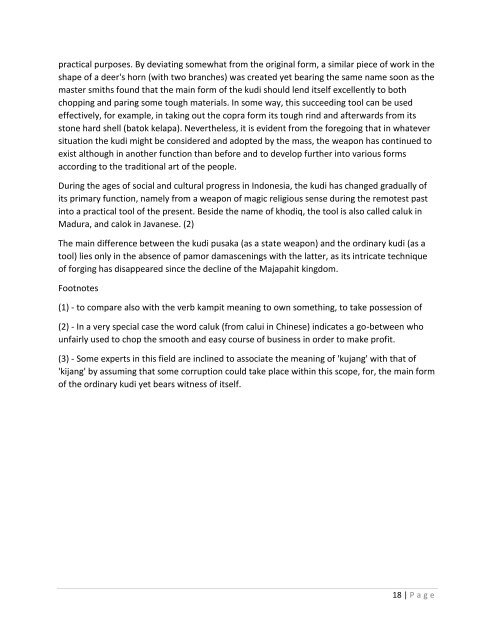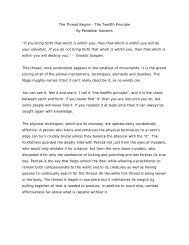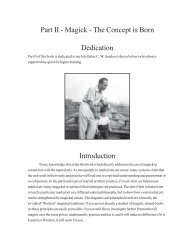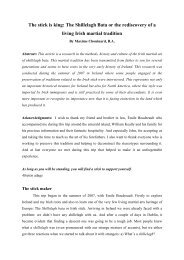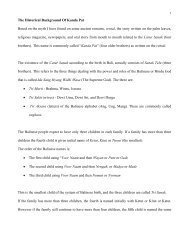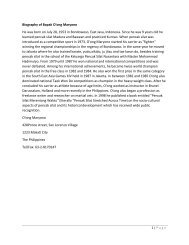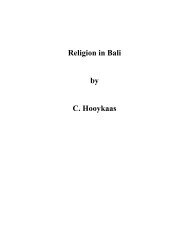The Myth of Maempo Cimande - Pukulan Cimande Pusaka
The Myth of Maempo Cimande - Pukulan Cimande Pusaka
The Myth of Maempo Cimande - Pukulan Cimande Pusaka
Create successful ePaper yourself
Turn your PDF publications into a flip-book with our unique Google optimized e-Paper software.
practical purposes. By deviating somewhat from the original form, a similar piece <strong>of</strong> work in the<br />
shape <strong>of</strong> a deer's horn (with two branches) was created yet bearing the same name soon as the<br />
master smiths found that the main form <strong>of</strong> the kudi should lend itself excellently to both<br />
chopping and paring some tough materials. In some way, this succeeding tool can be used<br />
effectively, for example, in taking out the copra form its tough rind and afterwards from its<br />
stone hard shell (batok kelapa). Nevertheless, it is evident from the foregoing that in whatever<br />
situation the kudi might be considered and adopted by the mass, the weapon has continued to<br />
exist although in another function than before and to develop further into various forms<br />
according to the traditional art <strong>of</strong> the people.<br />
During the ages <strong>of</strong> social and cultural progress in Indonesia, the kudi has changed gradually <strong>of</strong><br />
its primary function, namely from a weapon <strong>of</strong> magic religious sense during the remotest past<br />
into a practical tool <strong>of</strong> the present. Beside the name <strong>of</strong> khodiq, the tool is also called caluk in<br />
Madura, and calok in Javanese. (2)<br />
<strong>The</strong> main difference between the kudi pusaka (as a state weapon) and the ordinary kudi (as a<br />
tool) lies only in the absence <strong>of</strong> pamor damascenings with the latter, as its intricate technique<br />
<strong>of</strong> forging has disappeared since the decline <strong>of</strong> the Majapahit kingdom.<br />
Footnotes<br />
(1) - to compare also with the verb kampit meaning to own something, to take possession <strong>of</strong><br />
(2) - In a very special case the word caluk (from calui in Chinese) indicates a go-between who<br />
unfairly used to chop the smooth and easy course <strong>of</strong> business in order to make pr<strong>of</strong>it.<br />
(3) - Some experts in this field are inclined to associate the meaning <strong>of</strong> 'kujang' with that <strong>of</strong><br />
'kijang' by assuming that some corruption could take place within this scope, for, the main form<br />
<strong>of</strong> the ordinary kudi yet bears witness <strong>of</strong> itself.<br />
18 | P a g e


